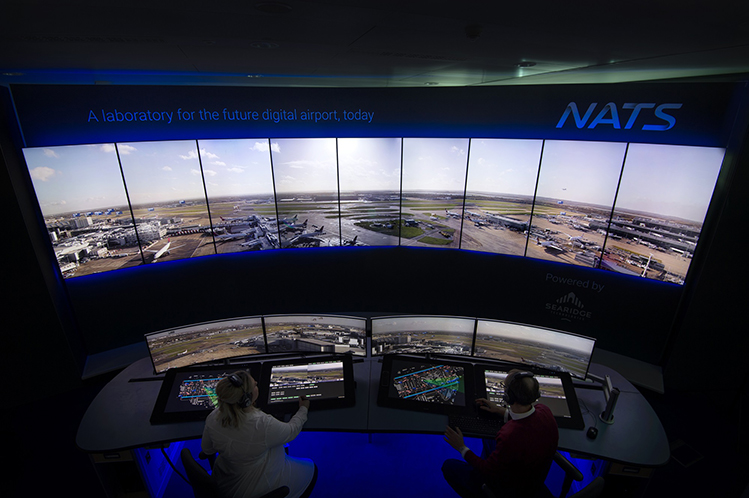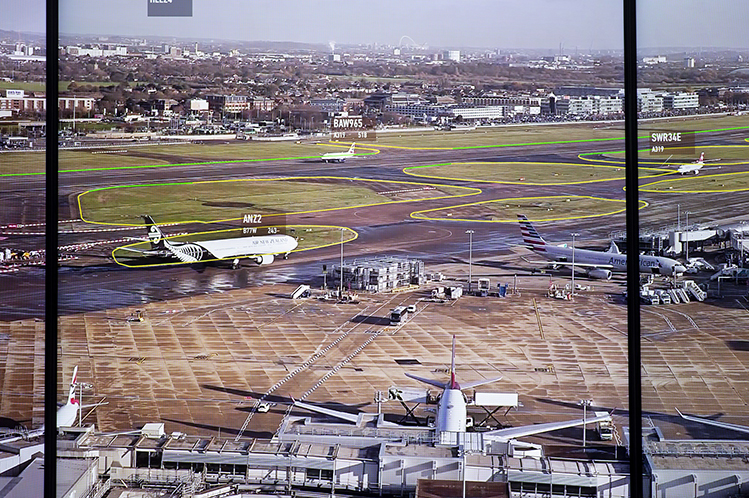NATS has begun a trial to understand whether Artificial Intelligence (AI) could be used to help reduce flight delays.
A project is underway within NATS’ bespoke Digital Tower Laboratory at Heathrow Airport to test whether a combination of ultra HD 4K cameras, along with state-of-the-art AI and machine learning technology, can be used to help improve the airport’s landing capacity in times of low visibility, as well as improving punctuality.
Heathrow’s control tower, at 87m, is the tallest in the UK. While providing commanding views of the airport and surrounding landscape, its height can also mean it disappears into low cloud, even when the runways below are clear.
In those conditions, where controllers have to rely on radar to know if an arriving aircraft has left the runway, extra time is given between each landing to ensure safety. The result is a 20% loss of landing capacity, creating delays for passengers and knock-on disruption for the rest of the operation.

NATS has begun a trial to understand whether Artificial Intelligence could be used to help reduce flight delays. A project is underway within NATS’ bespoke Digital Tower Laboratory at Heathrow Airport to test whether a combination of ultra HD 4K cameras, along with state-of-the-art AI and machine learning technology, can be used to help improve the airport’s landing capacity in times of low visibility.
NATS is deploying 20 ultra high-definition cameras at the airfield, the views from which are then fed into an AI platform called Aimee, developed by Searidge Technologies. The Aimee platform can interpret the images, track the aircraft, and then inform the controller when it has successfully cleared the runway. The controller then makes the decision to clear the next arrival. NATS believes the system will help the airport reclaim all the lost capacity.
Non-operational trials are underway to understand the feasibility of introducing the technology into service as early as this year. Aimee will study the behaviour of more than 50,000 arriving aircraft to ensure the accuracy of the system. The project findings will then be presented to the UK Civil Aviation Authority.
“Safety is always our top priority and Artificial Intelligence is about supporting air traffic controllers,” says Andy Taylor, NATS Chief Solution Officer. “While they remain the decision makers at the heart of the operation, we can use it to provide new tools that help them make the best possible decisions and improve efficiency and safety. Right now, we’re focusing on when the control tower is in low cloud, where I’m confident we can make a very positive difference, but I am convinced that this technology can totally revolutionise how air traffic is managed at airports around the world.”

The trial is part of a £2.5 million (€3m) investment NATS has made in a ‘digital tower laboratory’ located inside the Heathrow control tower. There, it is working with the airport to understand how technology could support the air traffic operation now and in the future.
The trial is part of a £2.5 million (€3m) investment NATS has made in a ‘digital tower laboratory’ located inside the Heathrow control tower. There, it is working with the airport to understand how technology could support the air traffic operation now and in the future.
“We’re delighted to be working with NATS to bring this pioneering technology to the UK’s only hub airport,” says Kathryn Leahy, Director of Operations, Heathrow Airport. “Our capacity challenges are unique to our operation and we’re always exploring new and innovative techniques to help us overcome these constraints and improve the passenger experience in a safe and resilient manner. We’ll be keeping a close eye on this trial, as the technology could have a major role as we prepare for the expanded airport. We will watch how AI and digital towers could be used to monitor all three of the expanded airport’s runways in future.”







